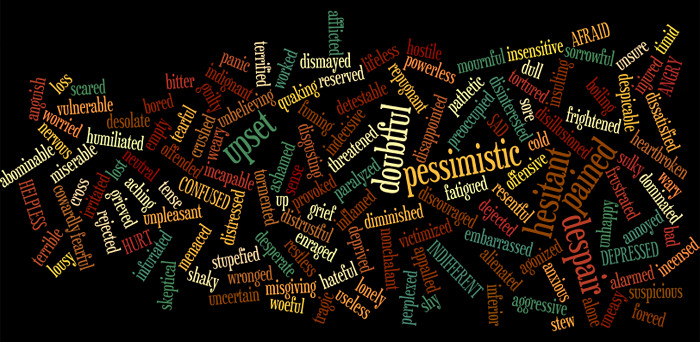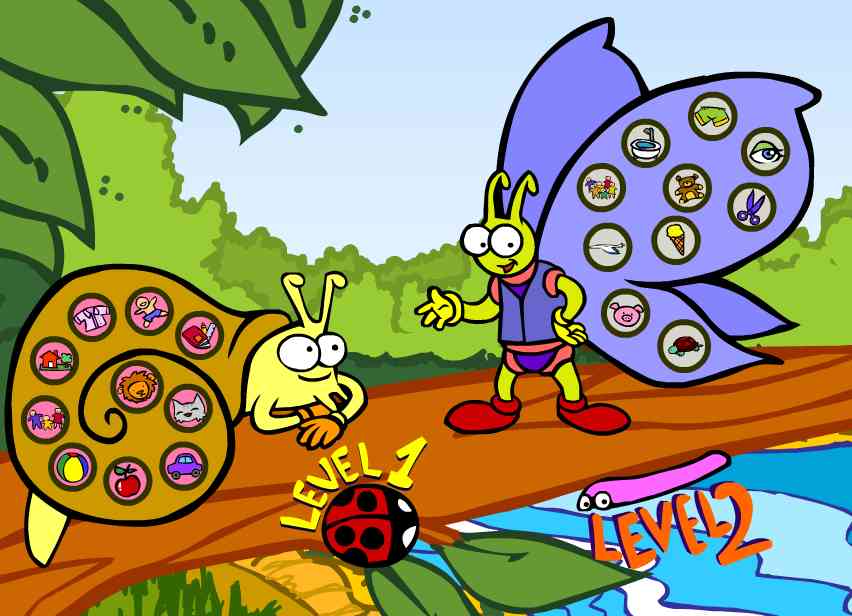
En mi post sobre cómo preparar el monólogo de los exámenes de la EOI, prometí que hablaría sobre cómo preparar el diálogo de los exámenes de la EOI. Con este post cumplo la promesa.
Nota: Esta información también es válida para la preparación de los diálogos de los exámenes Cambridge (PET, FCE, CAE).
Tipos de exámenes orales y técnicas para preparar los diálogos
En los exámenes orales de la EOI suelen haber dos tipos de formatos de preguntas en las que se le pide al alumno que participe en un diálogo. Un diálogo con foto y otro con dos, o tres fotos para comparar. En los exámenes Cambridge, se suelen incluir siempre fotos.
Consejo: Para que tu preparación sea lo más acertada posible, procura siempre hacerte con una copia de los exámenes anteriores de la Comunidad Autónoma donde te vayas a examinar. Aquí tienes más consejos generales sobre cómo prepararte los exámenes.
Pasos a seguir para prepararse los diálogos
1) Hazte con los posibles temas de conversación y prepara el vocabulario
Más adelante, daré ejemplos concretos de temas similares a los utilizados en exámenes de la EOI para diálogos, con foto y sin foto.
Pero, antes de eso, me gustaría que recopilases la mayor información posible sobre temas similares a los que pueden aparecer en tu examen.
Aquí tienes una página con temas de conversación.
Más temas de conversación.
Más temas de conversación.
Imagínate que el tema es como el marco de un cuadro que está por hacer y tienes que aprender el vocabulario y las estructuras para completarlo. Si el tema fuera, por ejemplo, «Holiday on the beach» tendría que poner dentro del cuadro todas las palabras y estructuras relativas «holiday» y «beach»: weather, summer, sea, swimming, sand, stay at a hotel, lodging, eat lots of seafood, hot, sunny, lie on a deck chair (tumbona), to sunbathe (tomar el sol) on the beach).
Empieza solamente con uno, o dos temas, nada más porque más vale un tema bien aprendido que varios a medias.
2) Prepara argumentos a favor y en contra del tema elegido
Todos los diálogos llevan una estructura similar: consisten en dar opiniones, estar de acuerdo, parcialmente de acuerdo, o en desacuerdo totalmente.
Deberás utilizar el tema que hayas elegido para imaginarte distintas opiniones sobre el mismo y ponerte en el lugar de un estudiante que está de acuerdo, del que está sólo parcialmente de acuerdo, y de un tercero que está en total desacuerdo.
En el caso de las vacaciones en la playa sería, por ejemplo:
Student A (he agrees): I like going to the beach in the summer because I love swimming in the sea. My favourite beach is in Alicante. I go there every summer with my family.
Me gusta ir a la playa en verano porque me encanta nadar en el mar. Mi playa preferida está en Alicante. Voy todos los veranos con mi familia.
Student B (he partially agrees): I like going to the beach too, but I don’t like crowded places, so I never go to the beach in the August. I like to go, either in June or in September. I prefer to stay in the city in August.
Me gusta ir a la playa, pero no me gustan los lugares llenos de gente, por ello nunca voy a la playa en agosto. Me gusta ir, o bien en junio, o en septiembre. En agosto prefiero quedarme en la ciudad.
Student C (he disagrees): I don’t like going to the beach at all. Beaches are always crowded and dirty in the summer. Besides the weather is usually very hot and you get sunburn. I prefer to go to a quiet and cool place in the mountains.
No me gusta ir a la playa para nada. Las playas siempre están llenas de gente y sucias en el verano. Además, generalmente hace mucho calor y te quemas. Prefiero ir a un lugar tranquilo y fresco en la montaña.
|
Opinions in
favour |
Pronun.
Figurada
|
Fonética
|
Significado
|
|
I
like this option because |
ai
laik dis opshion bikoss |
aj lajk ðɪs ɑpʃən bɪkɒz
|
Me gusta esta opción porque
|
|
I
think the best option is |
ai
zink de best opshion is |
aj θɪŋk ðə bɛst ɑpʃən ɪz
|
Creo que la mejor opción es
|
| I agree. This is the best option |
ai
agri. dis is de best opshion |
aj əgri. ðɪs ɪz ðə bɛst ɑpʃən
|
Estoy de acuerdo. Esta es la mejor opción.
|
| I couldn’t agree with you more. |
ai
kudn’t agri wiz iu mor |
aj kʊdənt əgri wɪθ ju mɔr.»
|
No puedo estar más de acuerdo contigo.
|
| You’re right. |
iur
rait |
jʊr rajt.
|
Tienes
razón. |
| You’re absolutely right |
iur
absolutli rait |
jʊr æbsəlutli rajt
|
Tienes
toda la razón. |
| I totally agree. |
ai
totali agri |
aj totəli əgri.
|
Estoy
completamente de acuerdo |
| Under my view it’s the best we can do |
ander
mai viu |
əndər maj vju ɪts ðə bɛst wi kæn du
|
En mi opinion es lo mejor que podemos hacer
|
|
Opinions against
|
Pronun.
Figurada
|
Fonética
|
Significado
|
| I don’t like this option because |
ai
dont laik dis opshion |
aj dont lajk ðɪs ɑpʃən bɪkɒz
|
No me gusta esta opción porque
|
| I’m not sure I agree with you. |
aim
not shur ai agri wiz iu |
ajm nɑt ʃʊr aj əgri wɪθ ju.
|
No estoy seguro de estar de acuerdo
|
| I’m afraid I don’t agree. |
aim
afreid ai dont agri |
ajm əfred aj dont əgri.
|
Me temo que no estoy de acuerdo
|
| I disagree because.. |
ai disagri bikoss
|
aj dɪsəgri bɪkɒz..
|
No estoy de acuerdo porque
|
| I’m afraid I can’t agree with you. |
aim
afreid ai kant agri wiz iu |
ajm əfred aj kænt əgri wɪθ ju.»
|
Me temo que no puedo estar de acuerdo contigo
|
| I’m sorry but I don’t share your opinion. |
aim
sory bat ai dont sher ior opinion |
ajm sɑri bət aj dont ʃɛr jɔr əpɪnjən.
|
Lo siento, pero no comparto tu/su opinión
|
| I’m not sure I agree with you. |
aim
not sher ai agri wiz iu |
ajm nɑt ʃʊr aj əgri wɪθ ju.
|
No estoy seguro de estar de acuerdo contigo
|
| I’m sorry but I don’t think what you’re saying is right |
aim
sory bat ai dont zink uat iur seing is rait |
ajm sɑri bət aj dont θɪŋk wət jʊr seɪŋ
ɪz rajt |
Lo siento, pero no creo que lo que está diciendo es
correcto. |
|
Suggestions
|
Pron. Figurada
|
Fonética
|
Significado
|
|
We could do this
|
wi
kud do dis |
wi kʊd du ðɪs
|
Podríamos
hacer esto |
|
How about doing this?
|
hau
abaut duin dis? |
haw əbawt duɪŋ ðɪs?
|
¿Qué tal si hacermos esto?
|
|
Why don’t we do this?
|
wai
dont wi du dis? |
waj dont wi du ðɪs?
|
¿Por qué no hacemos esto?
|
|
What do you think about this?
|
uat
du iu zink abaut dis? |
wət du ju θɪŋk əbawt ðɪs?
|
¿Qué
piensas de esto? |
|
Opinions
|
Pronun.
Figurada
|
Fonética
|
Significado
|
|
From
my point of view |
from
mai point of viu |
frəm
maj pɔjnt əv vju |
Desde mi punto de vista
|
|
As
I see it .. |
as
ai sii it |
æz
aj si ɪt .. |
Como
yo lo veo |
|
On
one hand I understand what you want to do, but on the other hand. |
on
uan hand ai anderstand uat iu uant tu du, bat on de ader hand |
ɑn
wən hænd aj əndərstænd wət ju wɑnt tu du, bət ɑn ðə əðər hænd. |
Por un lado entiendo lo que quiere(s), pero por otro
lado |
|
I
partially agree we can do it, but I would like to… |
ai
parsheli agri, wi kan du it, bat ai wud laik tu |
aj
pɑrʃəli əgr, wi kæn du ɪt, bət aj wʊd lajk tu… |
Estoy de acuerdo en parte que lo podemos hacer, pero me
gustaría |
|
Let
me put it this way.. |
let
mi putit dis wei |
lɛt
mi pʊt ɪt ðɪs we.. |
Déjame/déjeme decirlo de esta manera.
|
En inglés es importante utilizar un lenguaje muy educado. Por eso, te aconsejo
que aunque estés en desacuerdo con algo utilices expresiones tales como: I’m
sorry (Lo siento), I’m afraid (Me temo), If you don’t mind (Si no te importa).
3) Practica delante del espejo, o con otros compañeros
Es muy importante que hables en voz alta y que intentes pronunciar lo mejor posible y coger fluidez repitiendo muchas veces las mismas estructuras.
Lo ideal es que hagas estos dialógos con un profesor que te corrija, pero si no es posible la segunda mejor opción es que organices con tus compañeros de clase algunas practicas y que os deis opiniones y, en la medida de lo posible, intentéis corregiros.
Si no puedes practicar con otros compañeros, haz del espejo tu mejor aliado y ponte en la piel de cada uno de los puntos de vista, igual que si fueran personajes de una sketch televisivo.
Finalmente, acuérdate de medir los tiempos; son diálogos generalmente de 5 minutos.
***********************************************************
Ejemplos de diálogos
A continuación daré ejemplos de diálogos, primero sin foto, y luego con fotos.
Los ejemplos que aquí exponemos son similares a los de la Comunidad Autónoma de Galicia y corresponden al nivel intermediate 2 y avanzado.
Nota: Estos diálogos se realizan sólo con el examinador (no con otro estudiante) que tiene instrucciones de dar una opinión contraria siempre a la que tienes tú sobre el tema en cuestión.
Ejemplo 1: Diálogo sin foto. Situación imaginaria.
Instructions:
You are going to have a conversation with your partner about an imaginary situation for about 5 minutes.
Nota de Mónica. Por razones de espacio, los ejemplos de diálogos que ponemos en este post son de aproximadamente un minuto. Ten en cuenta que el diálogo del examen deberá durar al menos 5 minutos.
Remember it is a conversation so be participative and avoid very short answers.
If possible, try to reach an agreement at the end of the conversation.Nota: Fíjate bien en las instrucciones. Mira como en estas te piden que intentes llegar a un acuerdo.
***************
whose specialty is Mexican food.
go.
– You have been working very hard and you’d like to go out and see people.
- Student A: I think we could go to a Mexican restaurant. It’s very near my house. Lots of my friends from my neighbourhood go there.
- Student B/Examiner: How much does it cost?
- Student A: Its about €50 per person.
- Student B/Examiner: That’s way too expensive. I would rather go to a Mediterranean restaurant that’s in the city.
- Student A: But that’s too far away. We would have to drive there.
- Student B/Examiner: But the restaurant I want to go to is a lot cheaper. Besides, I’m very sorry to say this, but I don’t like spicy food. I know Mexican food is very spicy.
- Student A: What a pity! I really like spicy food. But you can order dishes that aren’t too spicy in a Mexican restaurant, for example, «burritos». If you don’t add chili it’s not spicy.
- Student B/Examiner: It’s seems like a good option, but I’m still not convinced because it’s too expensive.
- Student A: Don’t worry, I’ll pay.
- Student B/Examiner: No, please, that’s too much money.
- Student A: Well, I have some savings so I can afford it.
- Stundet B/Examiner: In that case, your choice seems much more attractive.
- Student A: And of course, next time we can go to your favourite Mediterranean restaurant.
*************
Ejemplo 2: Diálogo con fotos
Look at the pictures below. You work in an online magazine. You are trying to increase the number of readers and you have to choose the picture which best illustrates the places where people like to go on their winter holidays,

- Choose one of the three pictures and justify your choice.
- Discuss your choice with the examiner. He/she willl have a different opinion
- Negotiate until you reach an agreement.
- Student A: I think the best picture to call the attention of readers is the one in the middle because it’s winter. It shows several skiers in a nice location in the mountains.
- Student B/Examiner: I’m sorry but I don’t agree with you. In the winter people like to think of places where it’s warm. The first picture is the best one because it gives the reader the opportunity to daydream.
- Student A: I’m afraid that isn’t the best option because it isn’t a realistic destination. I mean now, with the crisis, nobody can afford to go to the Caribbean in the middle of the winter.
- Student B/Examiner: Precisely because of that the best option is the first picture. People love to daydream when they can’t afford something.
- Student A: But I’ve seen that there are a lot of skiers among our readers.
- Student B/Examiner: How do you know that? Where did you get those numbers from?
- Student A; Well, I don’t have any numbers. It’s just that I have seen our magazine in the hotel where I last went skiing and in a couple of ski shops where I get my own gear.
- Student B/Examiner: I’m sorry to say this, but then the information is not relevant. You need to use statistics coming from our website.
- Student A: Well, you have been working with this magazine for a long time so I suppose you know much better than I do.
- Student B/Examiner: Well, I don’t want to sound arrogant but that’s right.
- Student A: Then, the wisest thing to do is to put the picture of the people on the beach.
- Student B/Examiner: We can put the picture of the skiers in our next reportage about the best ski resorts.
- Student A: I totally agree with that.
*************
Ahora,
intenta tú preparar un dialógo utilizando lo aprendido en este post.
con los diálogos, monólogos u otro tipo de ejercicios en los exámenes orales de
la EOI, Cambridge, o cualquier otro tipo de examen de inglés. Así mucha más gente se
beneficiará.
***************
¿Estás pensando hacer un curso de inglés en el extranjero? Kaplan tiene la solución.

Estudia inglés por Skype desde tu casa u oficina. Profesores especializados en los problemas de los hispanohablantes. Prueba gratis.

Novedades:
- Get (significados y usos), de Gareth Jones
- Absent-minded/clueless (diferencias), de Dan Darrow
- English Central mejora tu pronunciación, de Roberto Reboredo
- Nuevo portal para traducciones automáticas Itranslate4.eu. Pruébalo, es gratis.
Este servicio gratuito y público se ha hecho posible gracias al consorcio de los mejores proveedores de servicios de traducción de Europa (SYSTRAN, PROMT, Linguatec, MorphoLogic, Amebis, Sunda, pwn.pl, SkyCode, Trident) coordinado por el Instituto de Investigación Lingüística de la Academia de Ciencias de Hungría.
*****************

CURSO GRATUITO FIRST CERTIFICATE
Unit 20 (última actualización)


